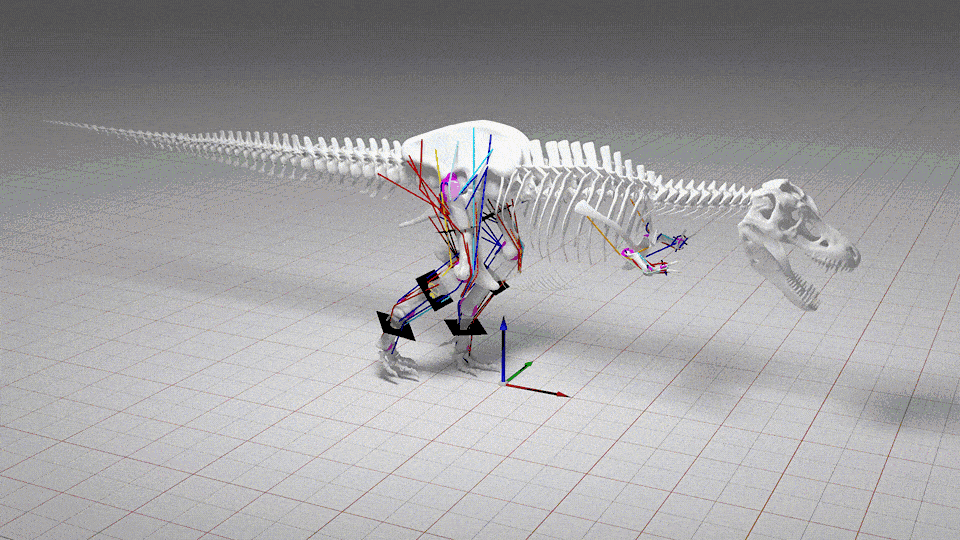When you purchase through links on our site , we may earn an affiliate committal . Here ’s how it work .
More than 100 million years ago , a fearsome birdlike dinosaur was swept into a lake and transform into an exceptional fossil in what is nowChina , preserving one of the few intact bowel remnants known from nonavian dinosaur , a new report notice .
Paleontologists knew they had unearth something special when they find out " a magnanimous blue layer in the abdomen '' of the fossilized beast , which belong to the newly discovered speciesDaurlong wangi , as well as a dinosaur lineage called the dromaeosaurids , which includes the ascendant of modern birds . This blueish stratum had " exceptional preservation " of the dinosaur ’s bowel , the researcher wrote in the study , bring out in the journalScientific Reportson Nov. 19 .

The “exceptional” fossil ofDaurlong wangifrom the Upper Cretaceous period of Inner Mongolia, China.
The finding proffer worthful insight into both dame and dinosaur gutevolution , giving researchers a clear window into dinnertime during the Lower Cretaceous ( 145 million to 100.5 million year ago ) .
Related : These 125 million - year - old fossils may hold back dinosaur desoxyribonucleic acid
Dromaeosaurids — also cognise as " raptors " — likeD. wangiwere mostly small , feathered and carnivorous . This grouping roamed theEarthfrom the mid - Jurassic period ( about 167 million years ago ) until the end of theCretaceous period(66 million years ago ) . Their rank included some of the most notable pop culturedinosaurs , such asVelociraptorandDeinonychus . But despite their popularity , small is known about their actual guts .

Soft tissue preservation is rare for any fossil , and intestinal preservation is especially uncommon in dinosaurs . " This is the first case among dromaeosaurids , " survey co - author Andrea Cau , an self-governing paleontologist based in Parma , Italy , told Live Science in an e-mail .
Fossilization conditions have to be just right in rescript to prevent decay - causingbacteriafrom eat away delicate soft tissues , such as cartilage and organs . The newly describedD.wangispecimen was likely buried very quickly under soft , fine deposit at the bottom of a soundbox of water in what is now the Jehol Biota — an area known for well - preserved fossils in modern - Clarence Day Inner Mongolia , an sovereign region in northerly China . There , in the low - oxygen environs where aerobic bacterium could not survive , the dinosaur ’s remains mineralized into fogy .
The researchers named the dinosaur ’s genus , " Daurlong , " after the Daur people of Inner Mongolia and " tenacious , " the Chinese give-and-take for " dragon . " The species name , " wangi , " honors Wang Junyou , the director of the Inner Mongolian Museum of Natural History .

The singular preservation provides insight into howD. wangilived , and what it could have eaten . From what the researchers could differentiate , its intestinal piece of ground appears interchangeable to the very few other remnants have a go at it from meat - eat dinosaurs , suggest that more omnivorous dromaeosaurid gut architectural plan did n’t evolve until after the sunrise of New birds following the Cretaceous stop . It also appears thatD. wangiate small quarry , such as mammals ( which were no prominent than badger during the Mesozoic era ) , Pisces , other modest dinosaurs and perchance amphibians . " Given the teemingness offrogsand other amphibians in theDaurlonglocality , " it ’s possible that this dromaeosaurid hunted frogs and salamanders , Cau said .
— What colouring material were the dinosaurs ?
— T. rex could have been 70 % grownup than fossils suggest , young study shows

— Teenage duck’s egg - billed dinosaur struck out on their own , forming cliques
AlthoughD. wangi ’s guts were preserved , its stomach was not . Perhaps the " exceedingly sulphurous environment of the stomach immediately after the expiry of the animal " prevented it from mineralizing and turning into a fossil , the researchers wrote in the study .
obstinate to their depiction in the 1993 pic " Jurassic Park , " most dromaeosaurids were relatively small and lightweight.D.wangiitself was a small less than five feet ( 1.5 meters ) long from top to chase , about the size of a jigger . And , like other appendage of its class , it disport plume .

In the future , Cau and his team design to analyse the specimen more tight to glean insight about its feathers , life , and possibly its expiry . " Our hope is to determine some information about its plumage color in living and to comfortably construct the rum shape which led to soft tissue conservation , " he said .














